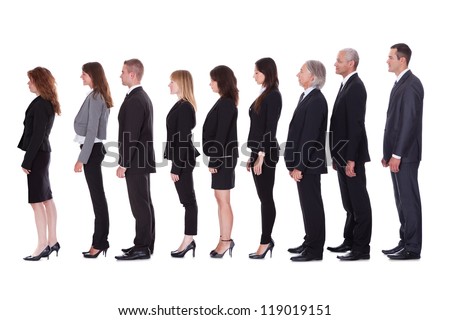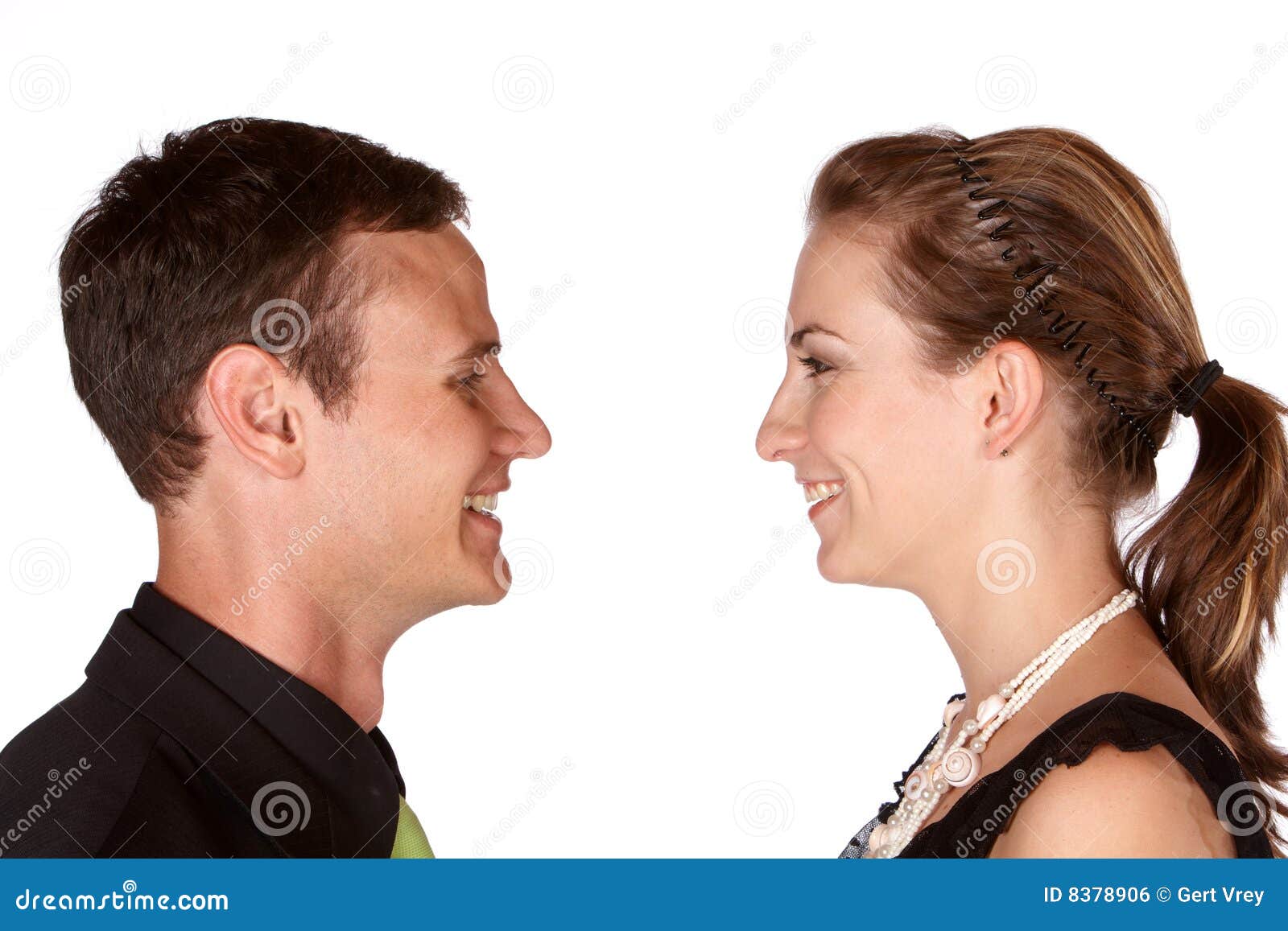Reply
Wed 23 Aug, 2017 05:35 am
Is there a difference between "to be in front of a person" and "to face a person"?
If so, when should I use each of them?
Would you please give me a few examples?
Thank you.
The key word here is 'face' used as a verb. If you are facing someone or something then your stance is such that your face and the front of your body are towards that person or thing.
I am facing John (we are looking at each other)
I am facing the lake.
I am in front of a woman (she is behind me) in the queue at the Post Office.
@centrox,
What does "
I'm in front of the telly" imply? Does it imply that "I'm watching the front or the back of the TV set"?
Thanks again for the help.
To be in front of a person or thing (house, car, TV set etc) is to be positioned so that the front of that person or thing is the nearest part.
@centrox,
If I am sitting or standing
in front of a woman, am I facing her?
Also, which of the following mean "She is facing John"?
1)
She is in front of John.
2)
She is opposite John.
3)
She is before John.
4)
She is across from John.
Thanks again for your kind help.
@paok1970,
paok1970 wrote:If I am sitting or standing in front of a woman, am I facing her?
She is facing you, since you are in front of her, but you may or may not be facing her. You could be facing away from her.
Quote:Also, which of the following mean "She is facing John"?
1) She is in front of John.
2) She is opposite John.
3) She is before John.
4) She is across from John.
None of them say she is facing John.
Can you see this picture? The woman speaking on a phone is in front of the man in the brown jacket, but she is not facing him. They are both facing in the same direction.

Can you see this picture? The woman in the second place in the queue is in front of the man in the third place, but she is not facing him.

@paok1970,
these people are facing each other

this photo show one man in front of three others

@centrox,
I'm writing back because I don't understand this part of your reply:
She is facing you, since you are in front of her, but you may or may not be facing her. You could be facing away from her.
Would you please explain it further?
Also, in the picture below, is the man
in front of the TV (set), is he
facing the TV (set) or both?

Thanks again for the help.
@paok1970,
paok1970 wrote:
I'm writing back because I don't understand this part of your reply:
She is facing you, since you are in front of her, but you may or may not be facing her. You could be facing away from her.
Would you please explain it further?
You wrote:
If I am sitting or standing in front of a woman, am I facing her?
I wrote: (1) "She is facing you, since you are in front of her".
Here is an explanation of that: you are in front of her. That means her front (her face, chest, stomach, knees, etc) are towards you. Her back is away from you. That is what we mean when we talk about 'facing'.
I wrote (2) "but you may or may not be facing her. You could be facing away from her".
Here is an explanation of that: there is nothing in your sentence (the one in red above) which says anything about the orientation of your body (which way you are facing, in fact). You could be facing her. You could be facing to her left, to her right, or facing away from her.
[quote="paok1970"]Also, in the picture below, is the man in front of the TV (set), is he facing the TV (set) or both?[/quote]
1. Conventionally, the 'front' of a TV set is deemed to be the part with the screen. That is the part oriented towards (facing) the man, so he is in front of the TV. You understand this.
2. As we can see the back of the man's head, his face is towards the TV, so, yes, he is facing the TV.
Is this clear now?
Put compactly, words or phrases such as 'in front of', 'behind', 'to the left/right of', 'above, 'below' etc, express position relative to something or someone, and 'facing', 'facing towards', 'facing away from', express orientation.
If I stand in front of you and rotate, I will be facing you (and we will be facing each other) once every revolution.
@centrox,

Which of the following sentences should I use to describe the above picture?
1)
They are facing each other.
2)
They are looking at each other.
3)
She's looking him in the face.
4)
She's looking him in the eye.
5)
He's looking her in the face.
6)
He's looking her in the eye.
@centrox,
If I stand in front of you and rotate, I will be facing you (and we will be facing each other) once every revolution.
What do you mean by "once every revolution"?
@paok1970,
paok1970 wrote:Which of the following sentences should I use to describe the above picture?
1)
They are facing each other. True
2)
They are looking at each other. True.
3)
She's looking him in the face. Possibly.
4)
She's looking him in the eye. Cannot tell. Doesn't look like it. She seems to be looking downwards.
5)
He's looking her in the face. Possibly.
6)
He's looking her in the eye. Cannot tell. Doesn't look like it. He also seems to be looking downwards.
@paok1970,
paok1970 wrote:
If I stand in front of you and rotate, I will be facing you (and we will be facing each other) once every revolution.
What do you mean by "once every revolution"?
Once during each rotation. I am revolving. Each complete rotation is one revolution.
@centrox,
Are the following sentences correct?
1)
They looked each other in the face.
2)
They looked each other in the eye.
If not, would you please
rephrase them for me?
Thank you.